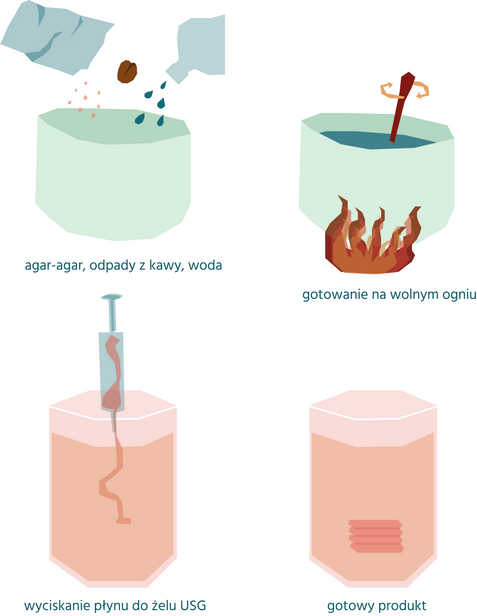Create Your First Project
Start adding your projects to your portfolio. Click on "Manage Projects" to get started
AgarPrint
Date
2023
My Experiment:
My goal was to find an alternative to 3D printing used at our university for projects that require trial prints. I was most inspired by designers Eric Klarenbeek and Maartje Dros, who created filament from algae. I decided to experiment with using agar-agar as the primary component of the filament.
I tried to create a classic filament from agar-agar and water, similar to PLA. I put 1 tsp of agar-agar and ½ cup of filtered water in a pot and cooked it over medium heat until it thickened. After thickening, I let it cool for 1-2 minutes. Then, I poured the mixture into a syringe with a long tube and slowly extruded the filament onto parchment paper. I left the extruded element to dry for a week, and eventually, I got a fairly strong and flexible material. However, since the sample shrank by more than 50%, I decided to try a different approach.
In the second experiment, the material production process was similar, but I added coffee to it, as a factor to reduce the shrinkage of the material. This time the filament shrank by 40%, but it was less flexible.
I continued the experiments by trying to create a shape from the warm liquid (agar-agar, water, and coffee) in a cool environment (water and calcium chloride, which causes faster solidification of the liquid consistency). The sample worked, but it was not suitable for prototype printing. The hot filament lacked support in the cooling liquid, making its shape chaotic.
The best idea turned out to be replacing the calcium chloride water with ultrasound gel, which met all the requirements. The gel had cooling properties and was thicker, allowing control of the hot liquid during printing. After removing the sample from the gel, the print was already solidified. After drying, it shrank by about 40%, as in the second experiment.











